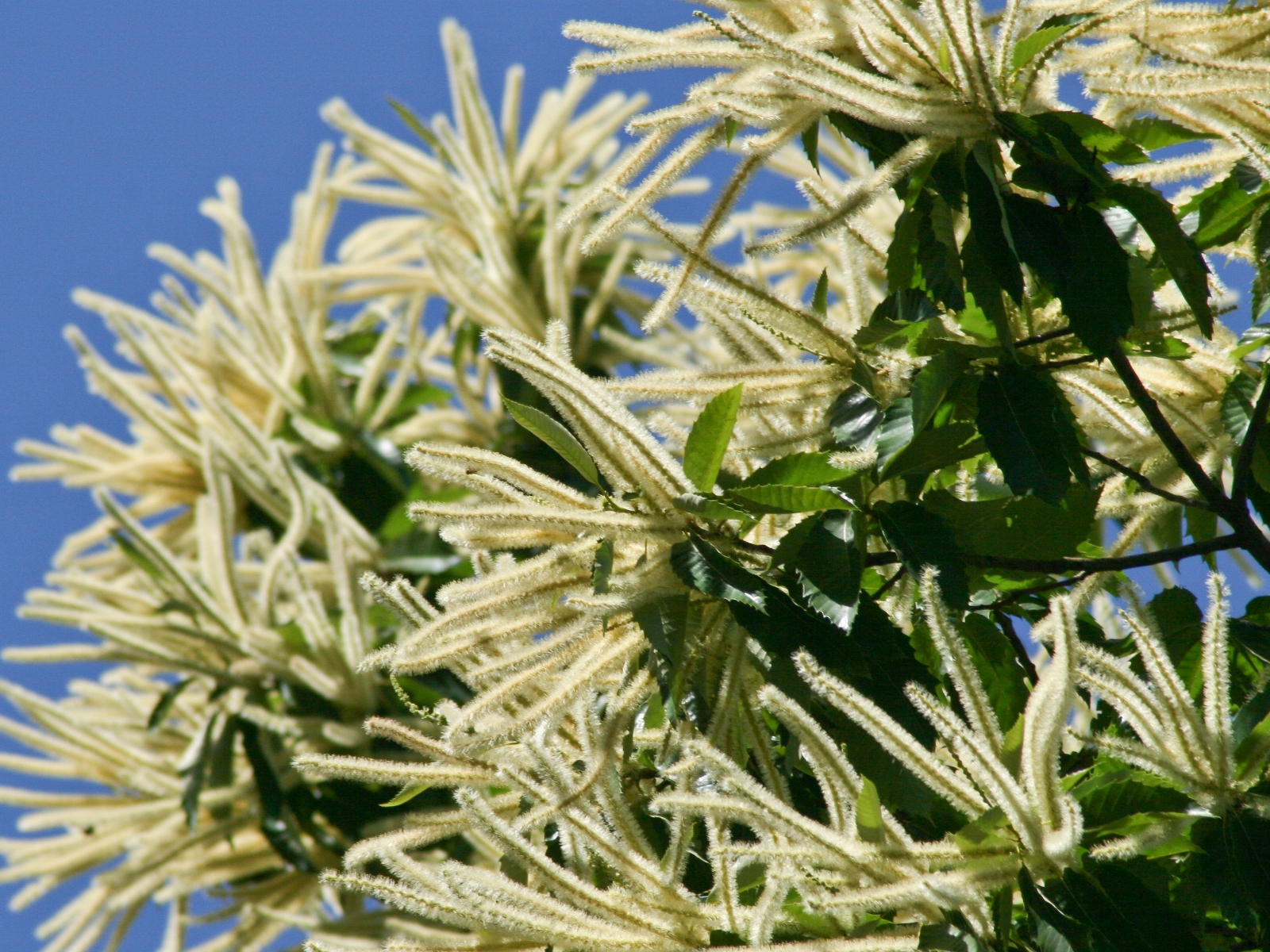Castanea sativa
Chestnut, sweet
Species Tolerances
- Drought Tolerance: Medium
- Shade Tolerance: No
- Waterlogging Tolerance: Low
- Frost Tolerance (trees from warmer climates may be frost tolerant, but their flowers may not be): Yes
- RHS Hardiness: H6
- Optimum Conditions for Growth:
A fast growing, tall and spreading tree. Prefers acidic to neutral, well drained soil such as sandy loam, and avoids limestone. Needs a sunny location (will not fruit well in shade). Grown as a coppice in southern lowland Britain. - Susceptibility to Pest/Disease:
Susceptible to sweet chestnut blight, a major threat (but a contained, notifiable disease), can host phytophthora ramorum, P.cinnamomii, P.cambivora. Oriental chestnut gall wasp (notifiable pest and the only pest to cause galls on Sweet chestnut).

Castanea-sativa-in-flower-by-Naonesig/ Wikimedia Commons https://upload.wikimedia.org/wikipedia/commons/thumb/6/62/PD-icon.svg/64px-PD-icon.svg.png
Service to Pollinators
- Summary of Service to Pollinators:
A very good source of nectar and pollen and produces a honey which often contains a percentage of honeydew making it darker. The tree secretes nectar best in hot summers. - Nectar Value to Pollinators: 3 (of 0-3)
- Honeydew Value to Pollinators: 1 (of 0-3)
- Pollen Value to Bees: 3 (of 0-3)
- Flowering Period: July
Risks
- Human Toxicity: Non-toxic
- Livestock Toxicity: Non-toxic
- Invasive Risk: No
- Suckering: No
Products
- Edible Fruit: No
- Edible Leaves: No
- Edible Sap: No
- Edible Seeds: Yes
- Honey, major source in UK: Yes
- For any medicinal potential, see 'Further Details' below.
- Timber: Yes
- Livestock Fodder: Yes
- Other Products:
Cleft chestnut paling fences. Hardwood resistant to rot due to the high levels of tannin in the wood. Coppice wood. Propolis can be made by honeybees from its resin/oils.
Utility
- Nitrogen Fixation: No
- Organic Matter Accumulation: Yes
- Phytoremediation: Insufficient Data
- Deacidification: Insufficient Data
- Windbreak: No
- Soil Erosion Control: Yes
- Shade or Shelter: Yes
- Plant Support: Insufficient Data
- Integrated Pest Management: Insufficient Data
- Wildlife Value: Yes
- Wildlife Value Summary:
Good biodiversity providing leaves for a large number of micro moths and provides nuts for a wide range of mammals especially red squirrels - Graduated Nativeness Classification ⓘ: 2 (of 1-10)1. Historic Native
2. Historic Introduction
9. Neutral Introduction
Further Details
Nut production is currently low in the UK compared to Southern Europe under current climatic conditions. Will be more productive for flowering, nuts and honey in a warmer British Isles climate. The current area for these trees to grow and flower well is South East England, Sussex and Kent. Has been naturalised in the British Isles since at least the 1200’s a possible Roman introduction.